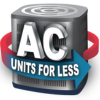In HVAC systems, proper management of condensation is crucial to maintaining efficiency and preventing water damage. Two common components used to manage condensate are float switches and condensate pumps. Understanding the roles of these components is essential in determining whether you need both in your HVAC setup.
This article will explain what a float switch is, how it works, and whether you need a condensate pump if you already have a float switch in place.
1. What Is a Float Switch?
Function and Purpose
A float switch is a safety device used in HVAC systems to prevent water damage from condensate overflow. It is typically installed in the condensate drain pan or in the drain line of an air conditioning unit or furnace. The primary function of a float switch is to detect the level of water in the condensate pan or drain line and shut off the HVAC system if the water level gets too high.
How a Float Switch Works
- Monitoring Water Levels: The float switch contains a buoyant float that rises and falls with the water level in the condensate pan or drain line.
- Triggering the Switch: When the water level rises to a certain point, the float triggers the switch, which can either shut off the HVAC system or activate an alarm to alert you to the issue.
- Preventing Overflow: By shutting off the system, the float switch prevents the condensate pan from overflowing, which could otherwise lead to water damage to the HVAC system and the surrounding area.
Types of Float Switches
- Inline Float Switch: Installed directly in the condensate drain line, this type of float switch monitors the water level within the line.
- Pan-Mounted Float Switch: Installed in the condensate pan, this switch monitors the water level in the pan itself.
2. What Is a Condensate Pump?
Function and Purpose
A condensate pump is a device that collects and pumps out the condensate (water) produced by an HVAC system. This is especially useful in situations where the water cannot drain away by gravity alone, such as in basements or other low-lying areas.
How a Condensate Pump Works
- Collecting Condensate: The pump collects the condensate in a reservoir as it drains from the HVAC system.
- Pumping the Water Out: When the water in the reservoir reaches a certain level, the pump activates and moves the water to a drainage location, such as a floor drain, sump pit, or outside the building.
- Ensuring Proper Drainage: The condensate pump ensures that water does not accumulate and overflow, which could lead to water damage or system inefficiency.
When a Condensate Pump Is Needed
- No Gravity Drainage: If your HVAC system is located in a basement or another area where gravity drainage isn’t possible, a condensate pump is necessary to move the water to a suitable drain point.
- Long Drain Runs: If the condensate needs to be moved a long distance or to a higher elevation, a pump is required to ensure it reaches the drainage point.
3. Do You Need a Condensate Pump if You Have a Float Switch?
Different Functions
A float switch and a condensate pump serve different purposes in an HVAC system:
- Float Switch: Acts as a safety device to prevent overflow by shutting off the HVAC system when water levels get too high.
- Condensate Pump: Actively removes water from the system, ensuring proper drainage, especially when gravity drainage isn’t an option.
When Both Are Needed
- For Complete Protection: If your HVAC system is in a location where gravity drainage is not possible (e.g., a basement), both a condensate pump and a float switch are recommended. The condensate pump will remove the water, and the float switch will act as a backup to shut off the system if the pump fails or if there’s a blockage.
- Preventing Water Damage: Even with a condensate pump, a float switch adds an extra layer of protection against potential water damage by shutting off the system before an overflow can occur.
When a Float Switch Alone Might Be Sufficient
- Gravity Drainage: If your HVAC system is installed in a location where gravity can naturally drain the condensate away (e.g., on an upper floor with a clear drain path), a float switch alone might suffice to protect against overflow in case of a blockage.
- No Risk of Backups: In situations where there is minimal risk of drain line blockages or pump failure, a float switch can provide adequate protection by shutting down the system when the water level rises too high.
4. Conclusion: Understanding Your HVAC Needs
The decision to use a float switch, a condensate pump, or both depends on the specific needs of your HVAC system and its installation location. A float switch is essential for preventing overflow and protecting against water damage, while a condensate pump is crucial in situations where gravity drainage is not possible.
- Use Both: For the highest level of protection, especially in challenging drainage situations, using both a condensate pump and a float switch is recommended.
- Float Switch Only: In installations where gravity can handle drainage effectively, a float switch alone might be sufficient.
Before placing an order for these components at acunitsforless.com, assess your HVAC setup to determine which devices are necessary to keep your system running safely and efficiently.


